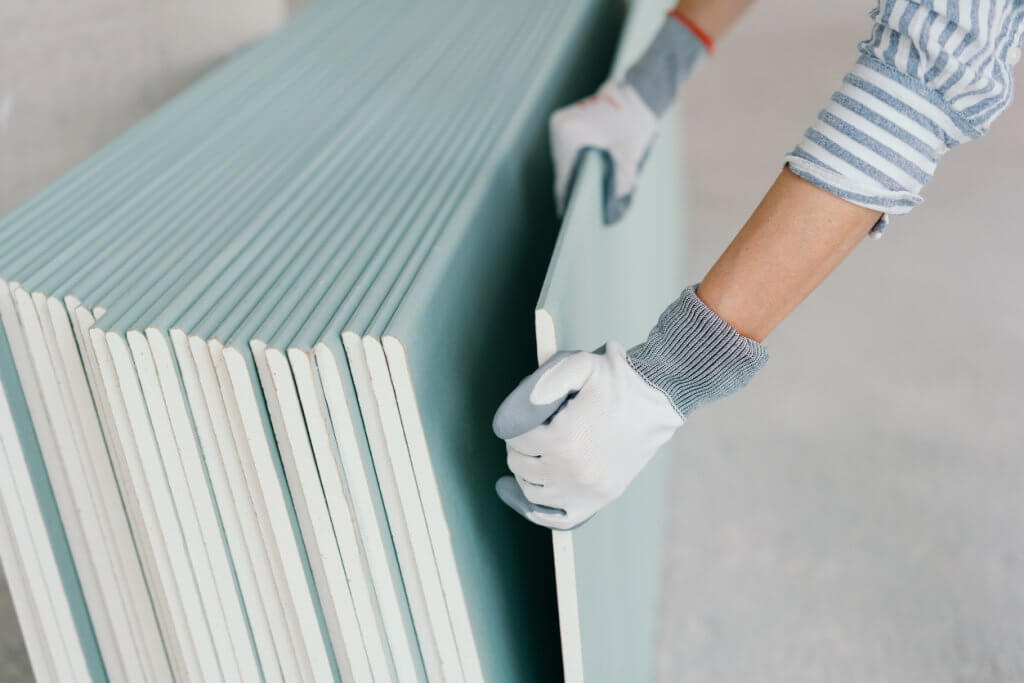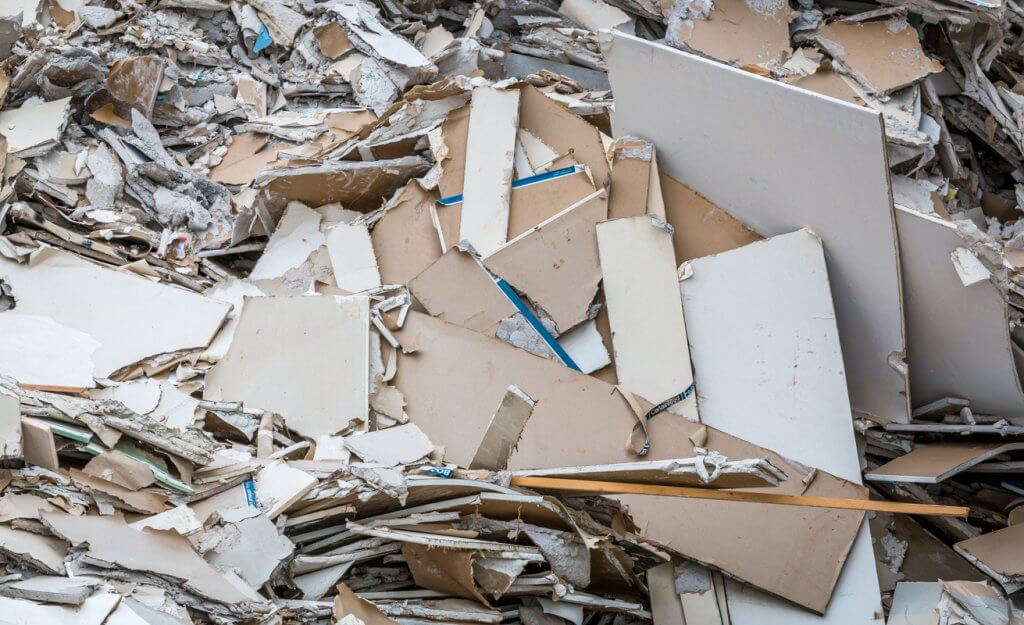Why is Plasterboard Hazardous Waste?
Responsible waste disposal is all about trying to recycle as much waste as possible to avoid using landfill sites and preserve resources. Plasterboard is a common material which is disposed of by both homeowners on DIY projects as well as construction companies, but it’s often referred to as hazardous waste.
If you’ve ever wondered why plasterboard is classified in this way or want to know more about how you can safely get rid of such material, read on to find out more.

What is plasterboard actually made of?
Plasterboard is a very plain looking material and is commonly used in most buildings to create a level, smooth surface for walls and ceilings. So why is it considered to be hazardous?
The key ingredient in plasterboard is gypsum, a fine sulphate mineral mixed with water and pressed between two lining sheets before being dried out to create a solid board. While it’s usually a harmless material, when placed with biodegradable waste it is known to create a toxic gas – hydrogen sulphide (H2S). It’s this gas which has made it tricky for people to dispose of the material safely since it is not only extremely odorous but it can be poisonous and flammable, too.
What is the legislation in regards to plasterboard?
Up until 2009, the Environment Agency allowed for roughly 10% of construction waste to be made up of plasterboard in an effort to keep things practical. However, the rules were changed to ensure that even small amounts of gypsum couldn’t be mixed in with biodegradable waste to cause issues.
Plasterboard containing gypsum must now be separated out entirely, encouraging more people to recycle plasterboard waste so that it never ends up in landfill sites and can be put back into manufacturing.
Why can’t I put plasterboard in a skip?
The gas created by gypsum means that it’s dangerous for everyone involved. Not only will you smell it (usually the smell of rotting eggs), but it can be corrosive, which will ultimately cause damage to a metal skip. Whoever ultimately has to sort the materials mixed into your skip will also be at risk as it makes the waste more prone to a fire and, in extreme circumstances, there is the risk of an explosion.
At Camiers, we know that plasterboard is a common material you want to get rid of, which is why we’ll allow for plasterboard to be collected if it is bagged up separately. This means you can get rid of plasterboard in moderation with the rest of your construction waste while maintaining safe disposal practices.
How to properly dispose of plasterboard

As mentioned above, safe disposal of plasterboard means it has to be separate from your normal waste. Please speak to our team first for advice on this as we recommend disposing of plasterboard in moderation and can assist with the collection of this material when it is bagged separately to your normal waste. Mixing a hazardous waste in with your normal waste is both dangerous and could see you hit with a surcharge for contaminating waste.
Whether you’re renovating at home and have scrap plasterboard or you’re running a large commercial construction project and need to dispose of larger quantities of plasterboard, we can help. We’ll collect bagged plasterboard from your site or home along with your hired skip – but if you require further advice or instruction, please don’t hesitate to contact us as it will make the process simpler and smoother.
